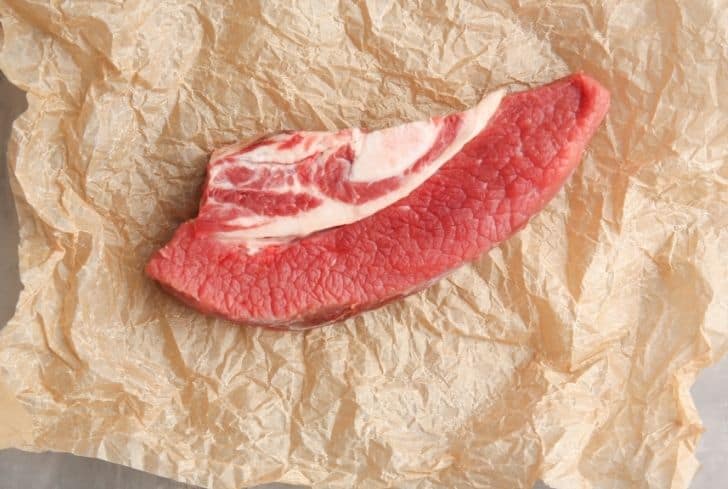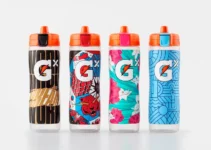Parchment paper is a great and versatile invention if you love cooking; it has a non-stick substance that makes everything easier. Of course, there are other uses apart from baking a cake or your favorite batch of cookies.
They can be used to store items in the fridge, wrap meals you intend to gift out and a lot more. Surely, you know how important this cooking item is, so you have a ton of it in your storage at home. Now, how do you dispose of all the parchment paper you use for your baking sprees?
You can’t reuse them forever, even though some are strong enough to be reused. If you are environmentally conscious, then you must desire a safe way to dispose of your useless parchment papers.
Well, we have curated this blog post especially for you; everything you need to know about parchment paper and how to safely get rid of them is at your fingertips. Dive in!
Can You Recycle Parchment Paper?
If your household is one of the many where baking is a norm, then disposing of your parchment paper properly is something you have to worry about. Certainly, you must use a substantial amount to bake regularly.
Have you ever wondered what makes parchment paper nonstick? Well, it’s silicone. Silicone is the material that makes parchment paper nonstick, it’s made from sand and other materials so it isn’t harmful to the environment.
Silicone isn’t also harmful to you when it’s on your parchment paper. Of course, it’s perfectly safe for cooking. However, the components of silicone make it difficult to recycle, and it being a light layer on your parchment paper doesn’t make much of a difference.
You also can’t recycle parchment paper because most times, it is quite stained when you are done working with it. Oily residues, stains from cooking spices and baking ingredients on your parchment paper can contaminate the remaining paper in the recycle bin and render everything useless.
You can, however, recycle the box of your parchment paper. It’s made from cardboard material, so recycling it isn’t an issue.
Since we can’t recycle parchment paper, a great way to dispose of it is to compost it. Parchment paper is compostable, which means you can dump it with the rest of your compost materials and watch it slowly decompose. Parchment paper makes your cooking easier, while also serving as fertilizer for your plants. Great, right?
However, there’s a catch to composting your parchment paper. Some should go straight to the bin, and some of them include glossy parchment paper and wax-lined parchment paper. Be sure to read the instructions on the box of your parchment paper; most of them come with instructions from the manufacturers about whether they can be composted or not.
You may also decide to dump it in the trash. Binning your useless parchment paper is another safe way to get rid of it. It’s made from paper, so it is biodegradable. It may end up sitting at the landfills for about two to six weeks, but it will eventually decompose.
Is Parchment Paper Microwave Safe?
Parchment paper is a great wrapping paper for the cooked meals you desire to gift out. It’s also great for packing some foods and putting them in the fridge; you can wrap that leftover piece of turkey from thanksgiving in parchment paper and put it in your fridge.
You may be wondering if you can put that wrapped turkey straight into the microwave. Let’s face it, transferring it into a Tupperware or any other microwave-safe container can be a bit stressful, so is it safe to heat it with parchment paper?
Absolutely. Parchment paper is one of the materials that can go in the microwave. It certainly won’t catch on fire, and it won’t also give you cancer. So when next you need to heat something wrapped in parchment paper, just do it!
6 Ways to Dispose of Parchment Paper
Of course, being environmentally conscious means you always look for means to dispose of your household waste materials without harming your environment. We applaud you! The best way to dispose of these items is to recycle them if they can be recycled.
We certainly can’t recycle parchment paper, so how do we dispose of the useless ones? Well, we have a couple of tips for you. Please sit back, digest and don’t hesitate to make use of one or all of them.
1. Cute Little Bags
We bet you didn’t know you could fashion your parchment paper into cute little bags. You would certainly have to use parchment papers that aren’t stained with anything, preferably the ones that you have used to bake your favorite cookies. Having a cute little bag that carries the wonderful aroma of your favorite cookies isn’t such a bad idea after all.
2. Festive Ornaments
Fashioning Easter and Christmas ornaments from your used parchment papers can be fun. If you have kids, it can be a holiday project for them. You would all have a lot of fun painting the ornaments your favorite colors and hanging them on your Christmas tree and other parts of the house.
You can easily craft out a beautiful Christmas tree, a little cherubic angel, Easter bunnies, or even a couple of cute little Easter eggs. Be sure to use parchment papers with little to no stains on them.
3. Mini Gift Boxes
If you plan to gift out some jewelry, or even homemade candies, you may as well make the gift boxes from your used parchment papers. As usual, you have to use the ones with little to no stains on them. They are quite easy to make too; you need a glue gun, a pair of scissors and your favorite paint colors.
4. Gift Cards
Handmade gift cards are thought to be more expressive than store-bought ones, so if you are looking to gift someone a birthday or Christmas greeting card, lean towards making rather than buying.
Now, this is where your used parchment papers come in. Of course, you have to use the ones with little to no stains on them. Get your markers and scissors and get to work. This is a more personalized gift item, and it will certainly be more appreciated. Don’t be afraid to get creative!
5. Pattern Paper
If you are a baker, and a fashion designer, you just hit the jackpot! We bet you didn’t know that you could fashion your favorite outfit patterns from parchment paper. Well, now you do.
The best part is parchment paper is just as soft and versatile as the traditional pattern paper. Now, you can save yourself a few bucks by saving your used parchment papers and repurposing them instead of binning them.
6. Decorations
You can cut your used parchment papers into various shapes and sizes, paint them whatever color you want and position them at various parts of your house. They’re quite easy to work with too. You can cut out butterflies, flowers, stars and other shapes you fancy.
Is Parchment Paper Environmentally Friendly?
Parchment paper is made from paper, with an added light layer of silicone which accounts for its nonstick quality. Ordinarily, paper is environmentally friendly in that it is made from materials that can be replenished before they are used up. For instance, it is made from trees, which are renewable resources.
Although the process of making paper results in high consumption of water, water remains a natural renewable resource. It cannot be used up. Silicone is also added to parchment paper, and silicone is made from sand; another renewable resource.
For a material to be considered environmentally friendly, it has to be made from materials that do not deplete the ecosystem. Said materials also have to be non-toxic. Hence, parchment paper is environmentally friendly.
However, there is a downside. Not all parchment papers are environmentally friendly. If you are familiar with baking, you would know that there are two types of parchment paper- bleached and unbleached.
Bleached parchment paper is usually white, while the unbleached ones are the conventional brown ones. Bleached parchment paper isn’t quite as environmentally friendly as unbleached parchment paper because the bleaching process requires the addition of certain chemicals that can be harmful to you and your environment.
If you are opting for parchment paper, we suggest you go for the natural ones. They carry out the same functions as the bleached one, with the difference being nothing more than aesthetics.
Is Parchment Paper Different From Wax Paper?
Wax paper and parchment paper have such similar physical appearances that you may find yourself wondering if they can also perform the same functions. Well, if you find yourself in this situation, we have got you covered. So relax, and enjoy!
Parchment paper was designed to withstand a substantial amount of heat, you can put it in the oven and even the microwave and it won’t catch on fire. It also has a layer of silicone that gives it its nonstick feature.
Wax paper isn’t as tolerant to heat as parchment paper. In fact, you shouldn’t put your wax paper anywhere near fire or a strong heat source. You definitely cannot use it to line your baking pans if you intend for the pans to go in the oven.
The wax on it was added to give it a nonstick quality too. However, if you place it near fire or a strong heat source, the wax will likely melt and the paper will catch on fire. Using it to cook or bake in this context may result in your food getting mixed with melted wax.
Typically, wax paper is used when you need to knead some dough on your table without making a mess of it everywhere, or for packaging your foods and putting them in the fridge.
Wax paper and parchment paper can surely be interchanged; they are after all quite similar. You can use them for multiple similar purposes; however, you have to draw the line when a high temperature is involved.
Wax paper isn’t as strong as parchment paper because of the difference in its surface layer. Parchment paper has a silicone layer that can tolerate a substantial amount of heat, while wax paper will just end up melting and result in the paper catching on fire.
Conclusion
Choosing to go green is always a commendable decision, and we are proud of you. However, technology hasn’t advanced to the stage where we can recycle every item we want to dispose of, thereby protecting our environment. We are keeping our fingers crossed that we will eventually get there.
So, we have these great tips for you to use when you either cannot recycle your items or would rather repurpose them. Our tips are quite easy to use, so please; don’t be afraid to get creative!






